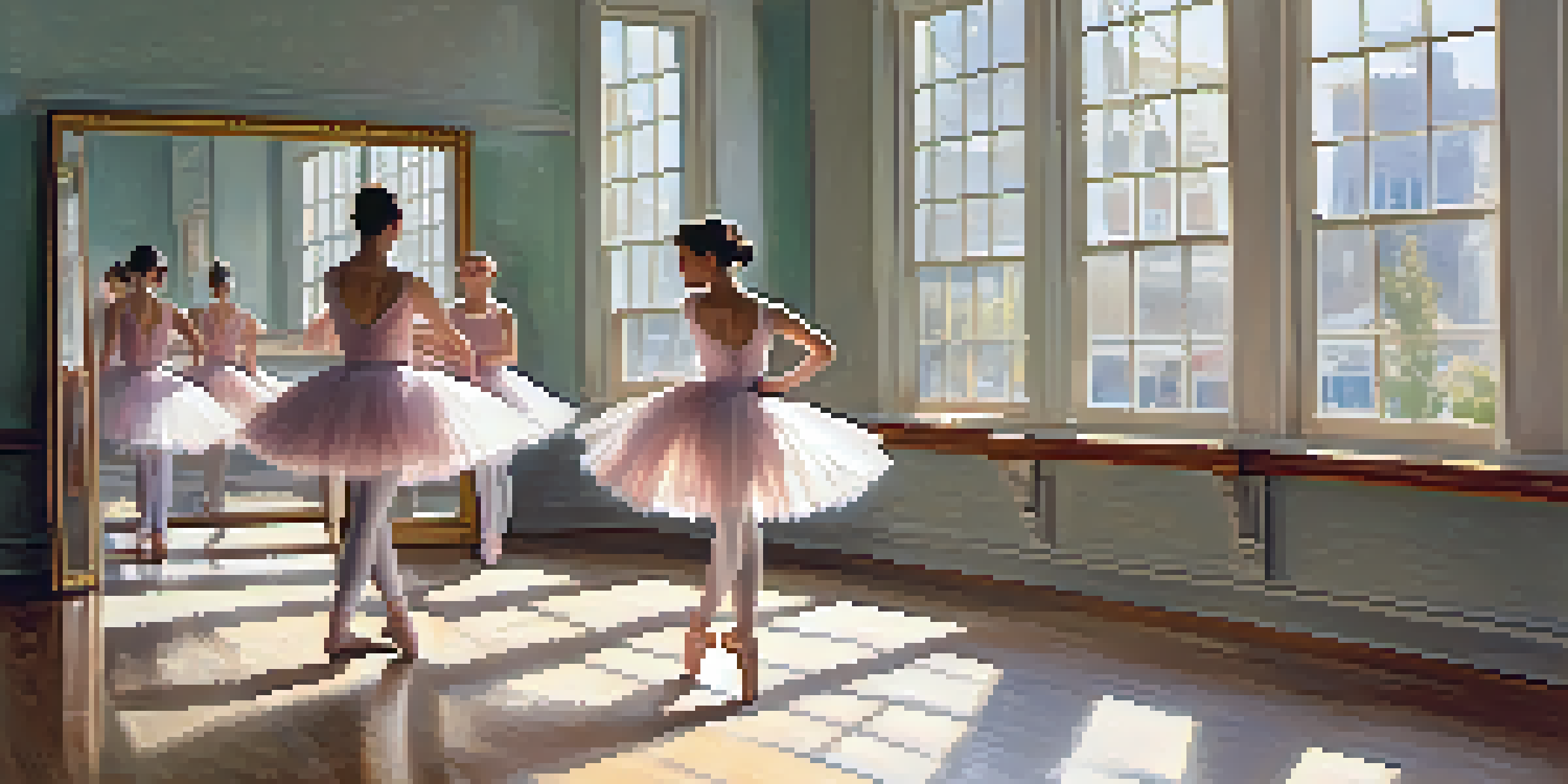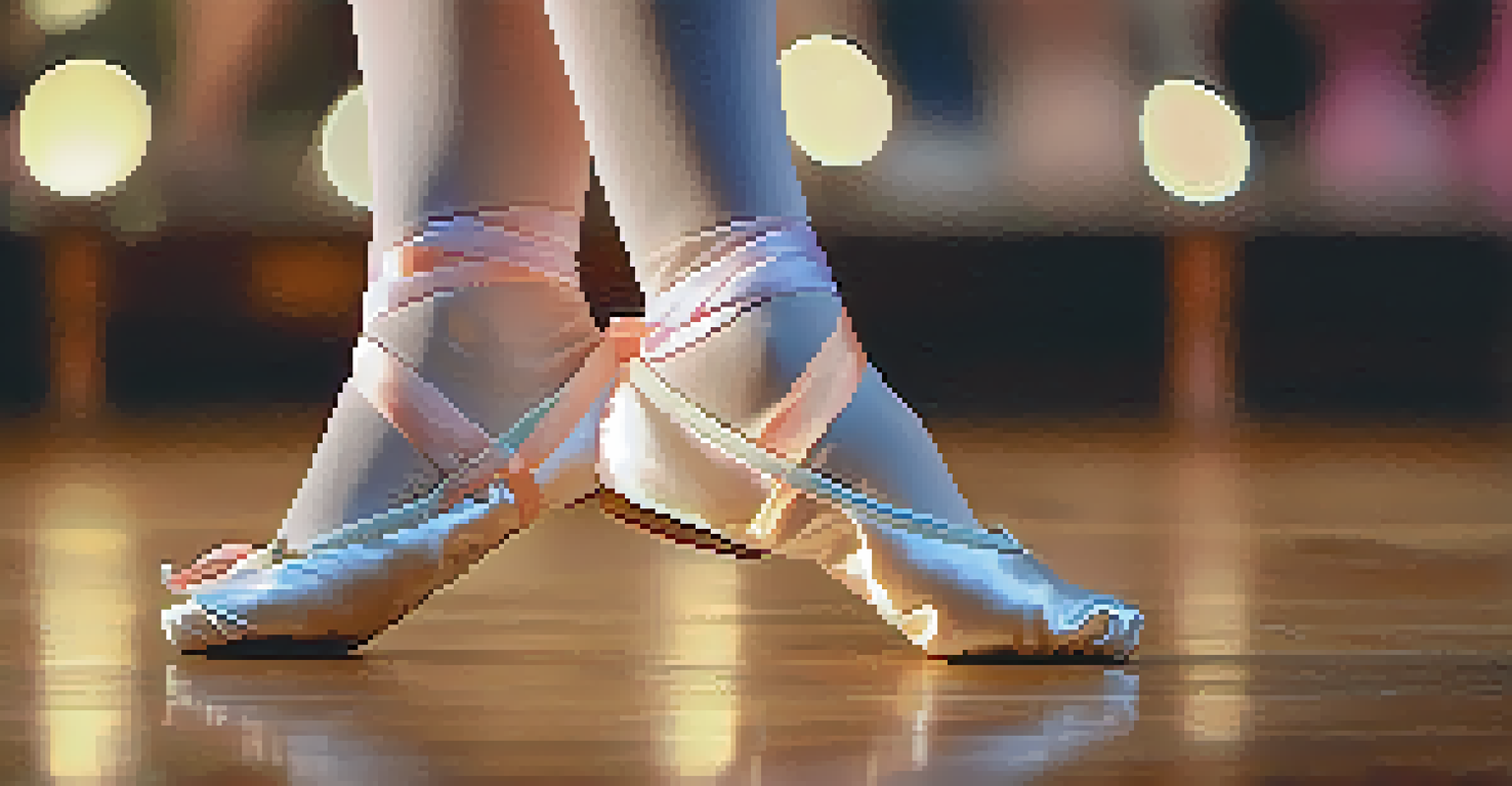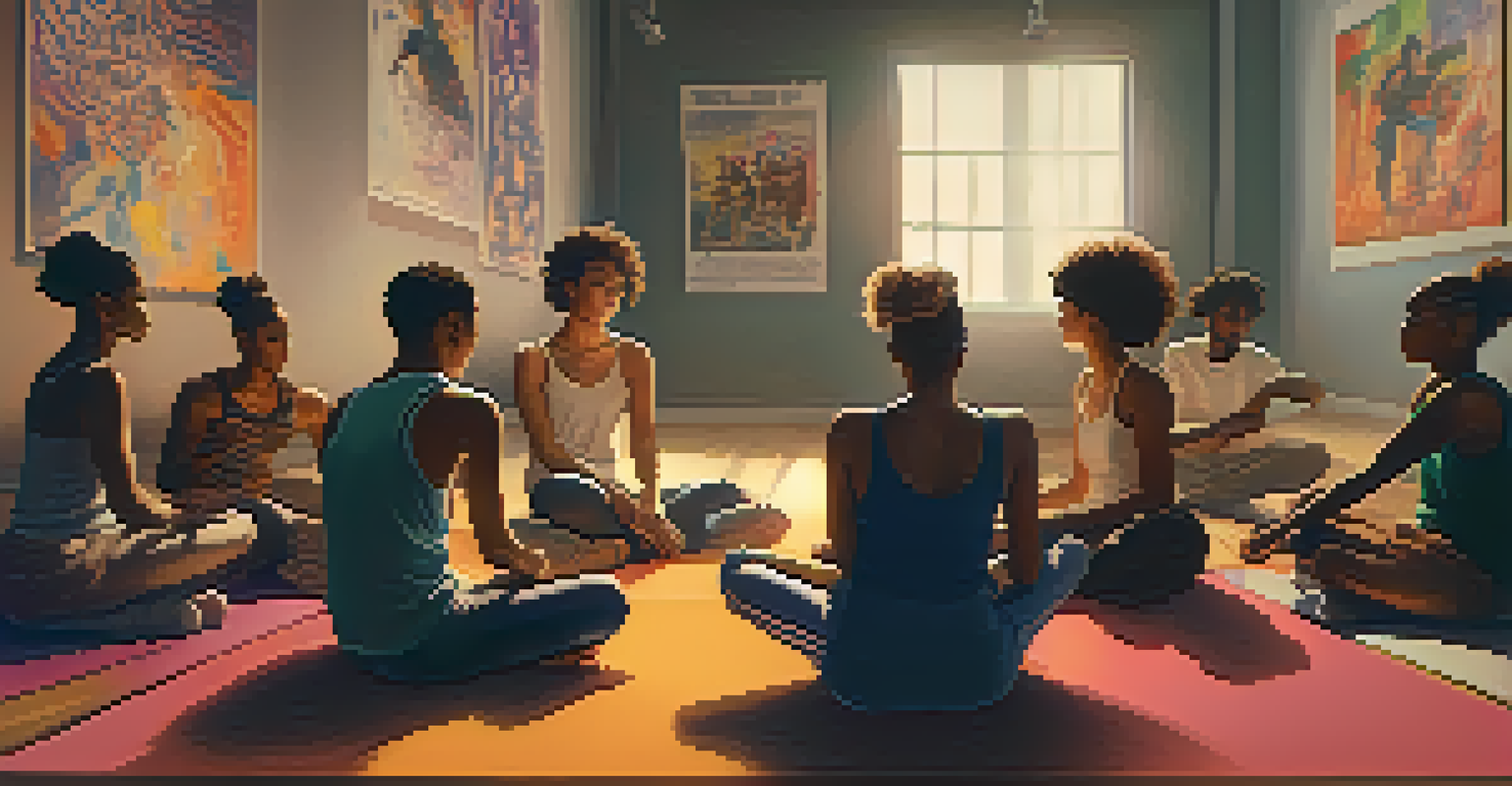The Role of Feedback in Dance Pedagogy and Learning

Understanding Feedback in Dance Pedagogy
Feedback is a crucial element in dance pedagogy, acting as a bridge between a teacher's observations and a student's growth. It provides insights into what a dancer is doing well and where improvement is needed, making it essential for skill development. Without constructive feedback, dancers may struggle to recognize their strengths and weaknesses, hindering their progress.
Feedback is the breakfast of champions.
In dance, feedback can take various forms, including verbal comments, non-verbal cues, and peer assessments. Each type serves a unique purpose, helping students gain a comprehensive understanding of their performance. For instance, a teacher might provide verbal encouragement while demonstrating a technique, offering immediate guidance that dancers can apply right away.
Ultimately, effective feedback fosters a supportive learning environment where dancers feel safe to explore, experiment, and grow. When students receive constructive critiques, they are more likely to develop a growth mindset, viewing challenges as opportunities rather than setbacks. This positive atmosphere encourages continuous learning and enhances overall dance education.
The Importance of Timely Feedback
Timeliness is a key factor in the effectiveness of feedback in dance education. When feedback is given immediately after a performance or practice session, students can directly relate it to their actions, making it more impactful. For example, if a teacher notes a dancer's posture during a routine right after they perform, the dancer can quickly adjust and understand the change needed.

Delaying feedback can lead to confusion and frustration, as the dancer may struggle to remember specific details of their performance. This is similar to how athletes benefit from instant replay; immediate insights help them refine their technique in real time. In dance, this immediacy can significantly accelerate learning and retention.
Feedback Fuels Dance Growth
Constructive feedback helps dancers identify strengths and areas for improvement, essential for their skill development.
By prioritizing timely feedback, instructors can enhance student engagement and motivation. Dancers are more likely to feel connected to their learning when they can see the results of their efforts reflected in their immediate responses to feedback. This practice cultivates a dynamic and responsive dance classroom, where learning is a shared journey.
Types of Feedback and Their Effects
Feedback can be categorized into three main types: evaluative, descriptive, and prescriptive. Evaluative feedback provides a judgment about performance, such as 'great job' or 'needs improvement.' While this can be motivating, it often lacks the detail necessary for dancers to understand how to improve.
What is the shortest word in the English language that contains the letters: abcdef? Answer: feedback. That’s the breakfast of champions.
Descriptive feedback, on the other hand, focuses on specific areas of performance, highlighting what was done well and what can be refined. For instance, a teacher might say, 'Your turns were strong, but consider using more arm extension for balance.' This type of feedback helps dancers make precise adjustments, enhancing their overall technique.
Lastly, prescriptive feedback offers actionable steps for improvement, guiding dancers on how to implement changes. This can include suggestions on body alignment or musicality. By combining these three feedback types, educators can provide a well-rounded approach that nurtures the dancer's growth while keeping them motivated.
Peer Feedback: A Collaborative Learning Tool
Incorporating peer feedback into dance education fosters a sense of community and collaboration among students. When dancers assess each other's performances, they not only enhance their observational skills but also learn to articulate their thoughts constructively. This process builds confidence and encourages open communication, vital skills in any artistic discipline.
Peer feedback also empowers students to take ownership of their learning. By engaging in discussions about each other's strengths and areas for improvement, dancers develop a deeper understanding of the dance techniques being taught. This collaborative approach can create a supportive environment where students feel comfortable sharing their ideas and experiences.
Timely Feedback Enhances Learning
Providing immediate feedback after performances allows dancers to make quick adjustments and retain information effectively.
Moreover, giving and receiving feedback from peers can be less intimidating than from an instructor, allowing for a more open exchange of ideas. This dynamic can lead to meaningful insights and foster a culture of continuous learning, where students feel invested in one another's growth as dancers.
Creating a Feedback-Rich Environment
To maximize the benefits of feedback, dance educators must cultivate a feedback-rich environment. This involves establishing clear expectations and norms around receiving and giving feedback, ensuring that students understand its importance. Creating such an atmosphere encourages open dialogue, where students feel safe to express themselves and seek guidance.
Instructors can facilitate this process by modeling constructive feedback practices and demonstrating how to accept critiques gracefully. For example, teachers might share their own experiences with feedback, showing students that everyone can grow and improve, regardless of their skill level. This transparency helps to demystify the feedback process and makes it more relatable.
Additionally, incorporating regular feedback sessions into the curriculum can reinforce the value of this practice. Whether through group discussions, reflective journals, or one-on-one meetings, consistent feedback opportunities keep students engaged and motivated. This commitment to feedback not only enhances dance skills but also nurtures lifelong learning habits.
The Role of Self-Assessment in Feedback
Self-assessment is a powerful tool in the feedback process, enabling dancers to develop critical thinking skills about their own performances. By encouraging students to evaluate their work, instructors help them understand their learning preferences and personal growth areas. This practice fosters a sense of autonomy and ownership over their dance journey.
Dancers can use self-assessment techniques such as reflective journals or video recordings of their performances. By reviewing their work, they can identify patterns, strengths, and areas needing improvement. This self-reflection not only enhances their technical skills but also deepens their emotional connection to their art.
Peer Feedback Builds Community
Encouraging peer assessments fosters collaboration and communication among dancers, enhancing their learning experience.
Moreover, self-assessment complements external feedback, providing a holistic view of a dancer's progress. When students learn to balance their own insights with those from instructors and peers, they cultivate a more nuanced understanding of their abilities. This dual approach can lead to greater self-confidence and a more profound appreciation for the art of dance.
The Future of Feedback in Dance Education
As dance education continues to evolve, the role of feedback will remain central to effective teaching and learning. With advancements in technology, educators now have access to tools that can enhance feedback delivery, such as video analysis and digital platforms for sharing critiques. These innovations can provide dancers with immediate, visual feedback that complements traditional methods.
Furthermore, the growing emphasis on personalized learning experiences means that feedback will likely become more tailored to individual dancer needs. Instructors might incorporate adaptive techniques that respond to each student's learning style, ensuring that feedback resonates on a personal level. This customized approach can lead to more meaningful progress and engagement.

Ultimately, the future of feedback in dance education lies in creating a balanced ecosystem that blends traditional teaching methods with modern technology. By embracing this evolution, educators can continue to inspire and empower dancers, helping them reach their full potential in a supportive and enriching environment.